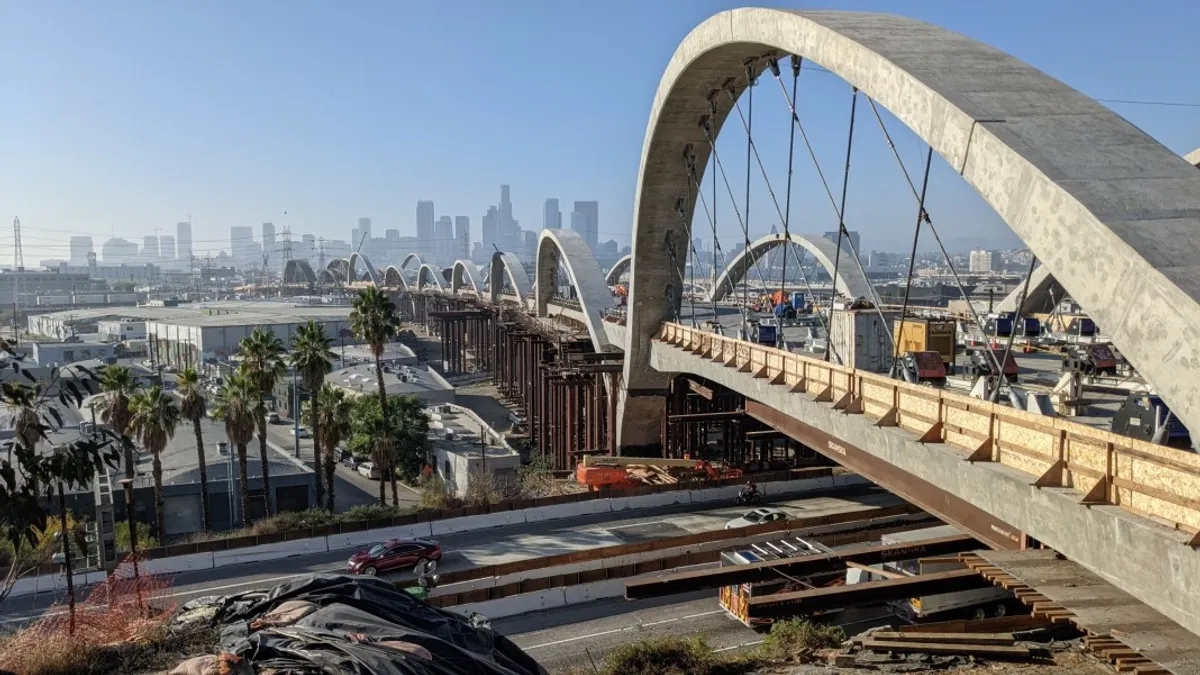Dive Brief:
- The much-filmed and photographed 6th Street Bridge in Los Angeles that connects the Arts District to the west and Boyle Heights to the east is being rebuilt, and has hit an engineering milestone. The first of 10 spans has been installed, and the falsework underneath has been removed, engineering consulting group COWI, the erection engineer on the $588 million project, said in a press release.
- The original bridge, built in 1932, was demolished in 2016 after studies showed it had a high vulnerability to failure if a major earthquake hit, along with other safety deficiencies, according to the L.A. Bureau of Engineering project website.
- Led by a Skanska-Stacy and Witbeck JV, the new viaduct is the largest bridge project in the history of the city, according to the project site, spanning Freeway 101, several railroads and the Los Angeles River. It broke ground in 2015 and is expected to be complete by the middle of this year.
Dive Insight:
The original 6th Street Viaduct was the longest of a set of 14 historic bridges. It was often used to represent Los Angeles's gritty side in movies, music videos and commercials, according to the project site, and is most commonly recognized for its appearance in the classic movie-musical "Grease." The design of the replacement, which nods to the original with its sweeping arches and will be illuminated at night, is known as "The Ribbon of Light."
The finished bridge will stretch 3,060 feet long and 100 feet wide, with 10 network arch spans and 388 hangers supporting the bridge deck. It also includes four vehicle lanes, sidewalks and bicycle lanes.
"If you consider each arch span as an individual bridge, then this essentially marks the completion of the first of 10 bridges — making this such an exciting milestone for the project," Tobias Petschke, senior project manager at COWI North America said in the press release.
The next step of the project is closing the superstructure, followed by the hanger installation in the second span. Once the bridge is complete, the city's Bureau of Engineering will construct a 12-acre park underneath.
In order to keep construction workers and motorists safe during construction, COWI designed custom lock-up devices to stabilize the bridge's seismic pendulum bearings, and helped monitor the falsework supporting the deck and the hanger forces as it was installed over the highway.
"Having the opportunity to apply our expertise to projects of this kind reminds you just how important our work is," Petschke said in the release. "By exploiting some of the most advanced techniques we can ensure the safe and sound erection of complex infrastructure projects."















